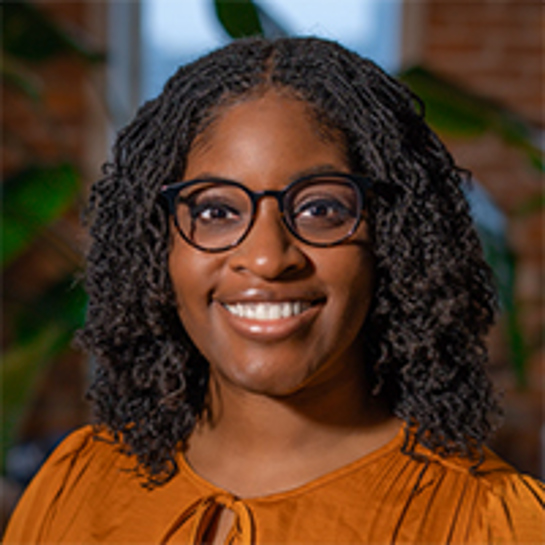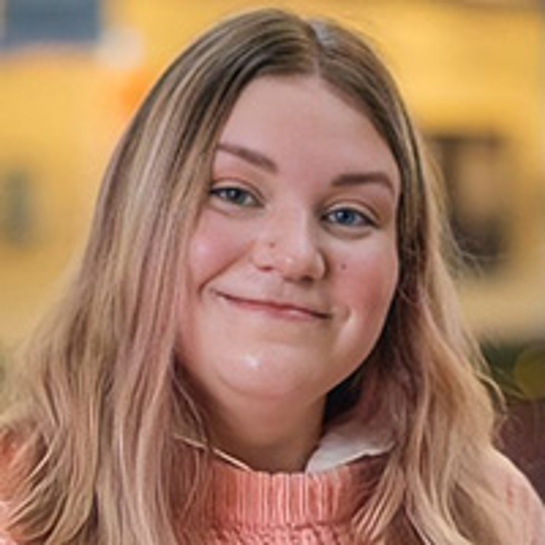Hidden Figures Revealed: Black Math History at The Ohio State University
In 2021, an interdisciplinary team at The Ohio State University (OSU) received a $50,000 racial justice seed grant to study the history of Black mathematicians at the institution. The resulting project—titled “Hidden Figures Revealed: Dynamic Narratives and History of Black Mathematicians from The Ohio State University”—aimed to utilize storytelling to address the lack of representation of Black faculty-level academics in mathematics. Nearly 200 mathematicians who identify as Black have earned degrees from the Department of Mathematics at OSU. These alumni have gone on to become prolific researchers, high school teachers, authors, economists, department chairs, lawyers, and university presidents; yet despite their successes, nearly all of them remain “hidden figures.”
Principal investigator Ranthony A.C. Edmonds—a 2022 MGB-SIAM Early Career Fellow—led the team, which consisted of six OSU faculty and staff members and 10 undergraduate student fellows from OSU and Central State University, a historically Black college in Wilberforce, Ohio. Community partners included the Ohio History Connection’s National Afro-American Museum and Cultural Center and the Math Alliance, an organization that seeks to increase the number of doctoral degrees earned by traditionally underrepresented students in the mathematical sciences.
The undergraduate communication fellows created alumni profiles and conducted historical research on key time periods in OSU history. Meanwhile, the undergraduate math fellows worked with Monica Delgado Carrillo, the Math Outreach Lead, to develop lesson plans for K-12 teachers that are inspired by the scholarship of notable Black OSU alumni.
Student Reflections
OSU students Katherine Lovelace and Hannah McDavid recently developed a linear algebra lesson plan based on the scholarship of William McWorter, Jr. — the first Black person to receive a Ph.D. in mathematics from OSU (he earned his degree in 1963). Here, they reflect on their experiences with the Hidden Figures project as a whole.
Ranthony Edmonds: The Hidden Figures project focused on storytelling from a historical perspective. Tell us about your efforts to learn the stories of Black math alumni from OSU.
Katherine Lovelace: Between 1963 and 1984, seven Black students earned Ph.D.s in mathematics from OSU. I was tasked with researching three of them: Guy Hogan (class of 1970), Rada Higgins (class of 1974), and Charles Chidume (class of 1984). Chidume, who passed away in 2021, served as president of the African University of Science and Technology, and a lot of information about his life and research is publicly available. Higgins was only the 20th Black woman in the U.S. to hold a Ph.D. in mathematics. And Hogan is a group theorist who earned a J.D. from Suffolk University Law School in 1985.

Hogan’s story particularly piqued my interest because of the way in which he connected his mathematical and legal backgrounds. I hope to use my mathematical background in a similar way, extending it beyond science, technology, engineering, and mathematics (STEM) into the social sciences. After obtaining his law degree, Hogan discussed math and law together in talks such as “The Evolution of the Common Law Towards Fairness,” “Comparative Negligence Converges to No-fault,” “Infinite Series and the Income Tax,” and “A Legal System as a Pseudo-metric Space.”
RE: What other types of historical research did you conduct?
KL: I specifically investigated OSU’s transition from open to selective admissions to understand its potential impact on the number of Black students who were pursuing math degrees. I used a keyword search tool to find articles in OSU’s archives that discussed changes to admissions policies in order to create a timeline. The first real mention of this switch appeared in OSU’s 1956 May Monthly, which mentioned an increase in required high school credit hours for incoming first-year students. In 1981, OSU introduced a conditional admissions program that permitted the admission of students without the required high school credits if their counselors completed a form that let them take the missing credits at the college level. OSU later announced its official transition to selective admissions in February 1986.
RE: How did you use storytelling to create educational resources based on the research of Black mathematicians at OSU?
Hannah McDavid: The most difficult aspect of creating lesson plans was condensing a mathematician’s thesis or paper—the result of years of effort—into a simple activity that explains some of the basic ideas. Once I selected a topic that embodied the work of a particular mathematician, I constructed a collaborative activity for students. To encourage interaction and engagement among the students, I tried to turn every lesson into a tactile game that involved some form of competition or challenge. Each lesson plan comprised group activities or puzzles, followed by an explanation that linked the exercise back to both real-life applications and the Black alumni whose work inspired it.
One successful lesson plan was based on Carolyn Mahoney’s 1983 dissertation, which considered matroid theory with a focus on several conjectures related to sequences that arise from the number of independent sets of a certain cardinality. A matroid \(M\) is a pair \(M=(E,\mathscr{I})\), where \(E\) is the ground set of \(M\) and \(\mathscr{I}\) is a collection of subsets of \(E\) called independent sets. Given an undirected graph \(G=(V,E)\), we can associate to it a graphic matroid \(M(G)=(E, \mathscr{I})\), where \(\mathscr{I}\) is the set of subsets of \(E\) that are acyclic. One can use matroids that arise from bipartite graphs to study linear assignment problems; more generally, matroids find many uses in topology and algebraic and computational geometry.
The game “Dots and Boxes”—in which partners take turns drawing lines on a grid to enclose a box and claim the enclosed area—inspired the matroid activity. In our game, students take turns drawing lines from node to node; when they create a cycle, they lose a point because that set is no longer independent.
RE: What was it like to work with students using the lessons that you designed?
HM: I remember one student asking, “What does this even have to do with math?” The student was trying to solve a rope puzzle that pertained to group theory and inverses for a lesson that was inspired by the thesis of Guy Hogan. After completing the activity, that individual was able to provide examples of inverses. Our workshops demonstrated the accessibility of math when students go in with an open mind. It was also extremely empowering for participants to realize that Black mathematicians had thoroughly studied the mathematics that they were currently exploring.
RE: What are your biggest takeaways from this project?
HM: From an outreach perspective, the Hidden Figures project has boosted students’ confidence and helped them understand that they can be both brilliant mathematicians and also Black. Academia has historically excluded such individuals, so highlighting the stories of those who have broken the mold can convince students who are just beginning their educational journeys that they are equally as capable.

In my experience, one-on-one interactions with students are the most impactful. Participants would arrive at our workshops after a full day of classes, sports, and club meetings and still bring their full attention and interest; their inspiring resilience to learn has encouraged me to pursue my own education with the same vigor. Students then left the workshops with a deeper knowledge of mathematics, broader world views, and a newfound confidence to explore STEM because they knew that previous Black academics had found success.
KL: I am often the only Black woman in my math classes. I have loved mathematics for as long as I can remember, but I struggled to maintain my passion after my first year of undergraduate study because I felt unworthy of being in math spaces. During my first summer home from school, I joined the Hidden Figures project. Researching and revealing the stories of other Black mathematicians at OSU enabled me to visualize myself in their shoes and envision my own mathematical future. For the first time, I experienced the impact of my love for math outside of the classroom.
Throughout my two years with this project, I have found my place in the math world. I attended the Field of Dreams Conference and interacted with well-established Black mathematicians and peers from universities across the country; connecting with people who are on the same journey as me was both informative and uplifting. My goal is to pursue statistics in graduate school to ultimately analyze and study data in order to contribute to social change. I want be part of the conversations that identify inequities, then strive to create equitable solutions.
Call to Action
“Hidden Figures Revealed” was the first comprehensive study of Black mathematicians at a single U.S. institution, and we do not want it to be the last. We believe that a local approach in which institutions examine their own demographic histories can help address the global issues surrounding a lack of representation in quantitative communities.
Specifically, we advocate for inclusive pedagogy — the creation of courses, modules, and projects that promote the scholarship of Black and other underrepresented individuals in STEM fields. By centering on these hidden figures, students learn about a wide variety of research areas, gain confidence in their advanced math skills, and envision more diverse quantitative research communities. We also advocate for outreach. Our workshops introduced students to the myriad possible career paths in mathematics. Individuals and/or departments that would like to support local outreach initiatives should connect with established community members or organizations that serve students who intend to pursue future careers in STEM, as well as local STEM professionals from underrepresented backgrounds. Educators who are interested in using the materials that we developed can find them online and are welcome to contact our team at BlackMathStory@osu.edu.
Our Hidden Figures project brought lesser-known contemporary and historical mathematicians to the forefront, combatted isolation by increasing students’ sense of belonging, and encouraged individuals to connect with their own STEM stories. We hope that our efforts serve as a call to action about storytelling’s power for outreach and pedagogy, as well as the necessity of a more inclusive professoriate. This approach can support new generations of mathematicians and provide quantitative learning environments where talented individuals of all races, genders, and socioeconomic backgrounds can thrive.
About the Authors
Ranthony A.C. Edmonds
Berlekamp Fellow, Mathematical Sciences Research Institute/Simons Laufer Mathematical Sciences Institute
Ranthony A.C. Edmonds is currently a Berlekamp Fellow at the Mathematical Sciences Research Institute/Simons Laufer Mathematical Sciences Institute and is affiliated with Duke University. In 2026, she will begin an appointment as an assistant professor of mathematics at The Ohio State University. Edmonds’ research interests include applied algebraic topology, commutative algebra, math education, and quantitative justice; her career mission is to increase access to mathematics through community-engaged scholarship.

Katherine Lovelace
Student, Ohio State University
Katherine Lovelace is a rising senior at The Ohio State University, where she is majoring in mathematics and African American and African studies. She plans to attend graduate school for either statistics or data science/analytics, with the goal of studying and analyzing data for social change.

Hannah McDavid
M.S Student, Georgetown University
Hannah McDavid recently graduated from The Ohio State University with a B.S. in mathematics and is currently pursuing a M.S. in environmental metrology and policy at Georgetown University. She is thrilled to have been part of the Hidden Figures project.

Stay Up-to-Date with Email Alerts
Sign up for our monthly newsletter and emails about other topics of your choosing.



